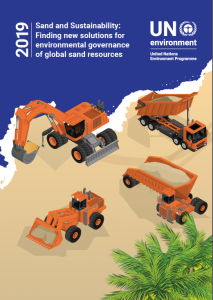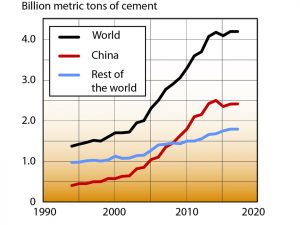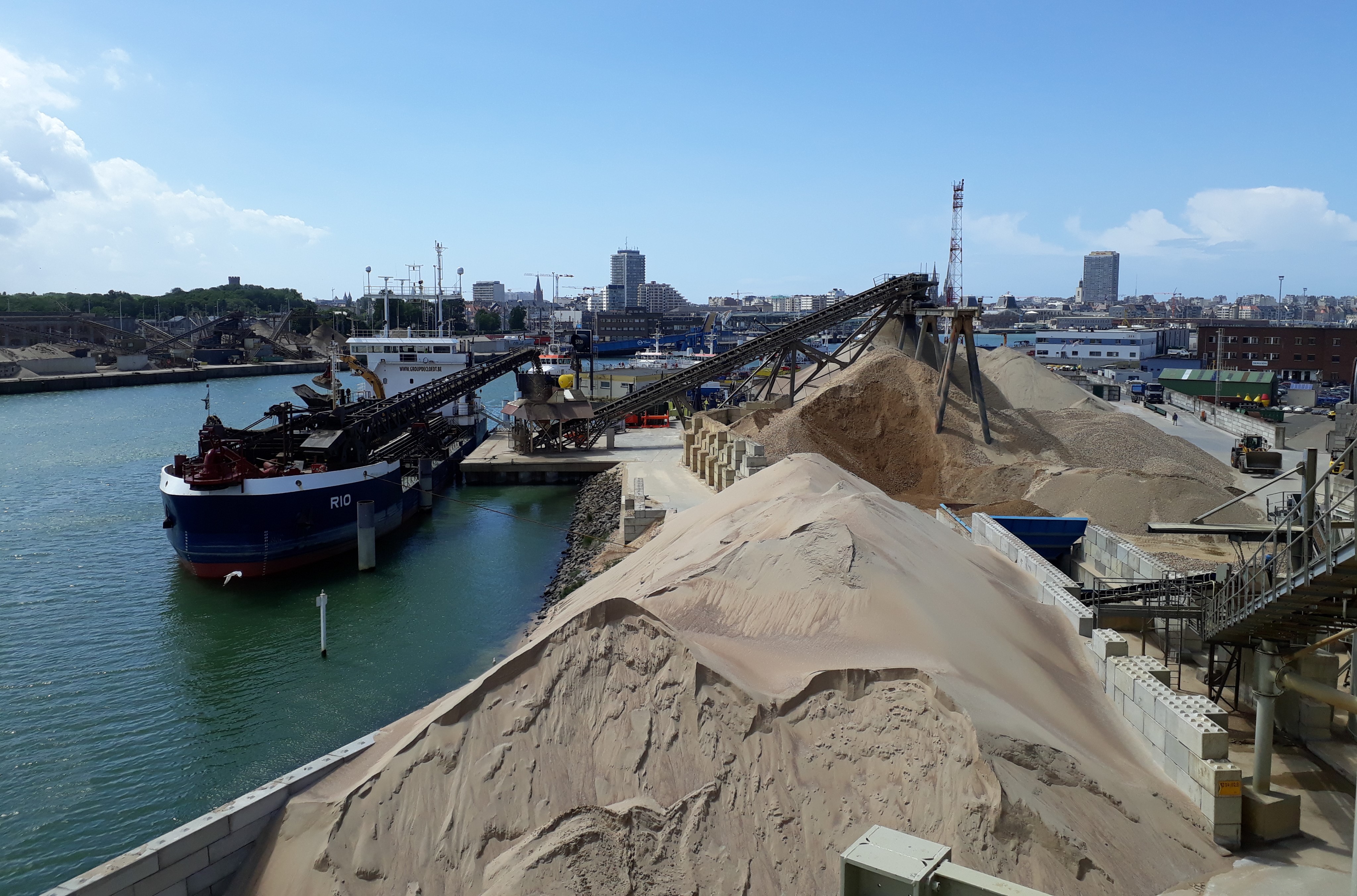The United Nations Environment Programme (UNEP) launched a new report in Geneva on 7 May 2019 examining the views of various stakeholders on the sustainability challenges of sand extraction and use. With this report, UNEP aims to stimulate a global debate on sand extraction, following the recent adoption of a new resolution on better governance of mineral resources by the 4th UN Environment Assembly.

Sustainability Challenges of the Global Extraction and Use of Sand Resources
The scale of sand and gravel extraction worldwide makes it one of the major sustainability challenges of the 21st century. An estimated 40 to 50 billion tonnes of sand is extracted annually from quarries and wells, in rivers, along coasts and in the marine environment. The growing world population, urbanisation, shifts in our consumption patterns, and the associated development of infrastructure, are important factors that have tripled the extraction of easily available sand resources over the past two decades. Without sand, there is no concrete, no asphalt, no glass, … and therefore no schools, hospitals, roads, solar panels or other necessary infrastructure. Water purification and land reclamation are also major users. Sand is even used in the industrial production of electronics and cosmetics … After water, it is nowadays the most reclaimed natural resource. Furthermore, dams and extraction have reduced the sediment supply from rivers to many coastal areas, leading to reduced deposits in river deltas and accelerated beach erosion.
The growing trend of unsustainable and illegal sand extraction in marine, coastal and freshwater ecosystems has far-reaching environmental, social and economic consequences (e.g. tourism, fisheries). However, scientific research and monitoring, as well as adequate policies to support responsible extraction and consumption, are lagging behind in many parts of the world. In the meantime, international trade in sand and gravel continues to grow. Due to the high demand in regions without local sand and gravel stocks, this business activity is expected to increase by 5.5% per year. As a result of international sand extraction bans, sand extraction for land reclamation projects, and the effects of unregulated sand extraction in international rivers, sand and gravel extraction has also become a rapidly growing transboundary issue.

New Solutions for Better Governance of Global Sand Reserves
The United Nations Environment Programme recognizes the need to reconcile global policies and standards with local sand availability, development needs and enforcement realities, and is committed to highlighting these challenges in order to improve governance, together with all stakeholders. The organisation therefore looks forward to the further development of effective tools that will enable better monitoring of the extraction and use of sand resources and efficient decision making in relation to the mitigation of the consequences of sand extraction.

The new report ‘Sand and Sustainability: Finding New Solutions for Environmental Governance of Global Sand Resources’ is based on this theme. It draws attention to the sustainability challenges and solutions for sand extraction and consumption, and recommends joint actions to update existing standards, set up monitoring programmes and initiate a dialogue throughout the value chain. In addition, it calls for the avoidance of unnecessary sand consumption, the use of more recycled and alternative materials, and the reduction of environmental impacts through more responsible mining practices. The report was produced in October 2018 during an expert dialogue facilitated by UNEP/GRID-Geneva (GRID = Global Resource Information Database) and the University of Geneva with funding from the Swiss Federal Ministry of Environment.
UN Resolution on Better Governance of Mineral Resources
The ‘Sand and Sustainability’ report follows the recent adoption (April 2019) of a new resolution on better governance of mineral resources by the 4th UN Environment Assembly, and was officially presented on 7 May 2019 at the Palais des Nations, Geneva, in the presence of Ms Joyce Msuya, UNEP’s acting director. The resolution focuses on gathering information on sustainable practices and knowledge gaps, and on listing implementation strategies and assessment methods. The report is to be submitted to the fifth session of the United Nations Environment Assembly.

Marine Sand Extraction in Belgium
In the meantime, Belgium is continuing to invest in better management of its mineral resources. For more than 40 years, sand has been extracted in Belgian marine waters under the authority and control of the FPS Economy, S.M.E.s, Self-employed and Energy. “In order to support long-term management, a geological knowledge base has been developed for the Belgian and southern Dutch parts of the North Sea, which makes the available quantities per sand quality available for consultation.” explains Vera Van Lancker of the research group ‘Suspended Matter and Seabed Monitoring and Modelling’ of the Royal Belgian Institute of Natural Sciences. “In addition, a link with a numerical toolkit makes it possible to calculate different impact scenarios of extraction.” The final report of the project TILES or ‘Transnational and Integrated Long-term Marine Exploitation Strategies’ is available on the website of the Belgian Federal Science Policy Office (BELSPO). As the stocks are not inexhaustible, there is a call for more thoughtful exploitation strategies.


